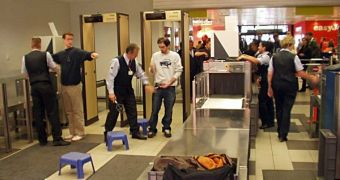On Christmas Day, December 25, a passenger of Northwest Airlines' Flight 253 attempted to detonate an explosive device he had strapped to his leg inside the plane, while in mid-flight. For some reason, the explosive failed to detonate properly, and the attacker was subdued by passengers and crew members. But it was only luck that made it possible for the people flying on the Airbus A330 aircraft to make it out alive. If the bomb had blown off according to plan, we could have been looking at a tragedy. Now, after the storm, many are trying to find an explanation for what happened, LiveScience reports.
Nigerian Umar Farouk Abdulmutallab was arrested for the attacks, and he is believed to have carried a batch of an explosive material known as PETN (pentaerythritol tetranitrate, or pentrite). The stuff was in a package that was affixed to his leg, and airport scanners failed to detect it. Officials and authorities are currently wondering why this happened, in spite of all the measures set in pace to prevent such an incident. Things are made even worse by the fact that, if it wasn't for a lot of luck, Flight 253 might have now been a wreck. Abdulmutallab boarded for Detroit from Amsterdam, Holland.
The question on everyone's lips at this point is how a man carrying an explosive powder, a detonator, and a syringe filled with a catalyst liquid could make his way aboard a plane. He managed to pass through all the filters at the Schiphol Airport, one of the largest in the world, undisturbed. All around the world, X-ray scanners, cavity checks and luggage checks are used as active prevention methods against terrorists, but these methods cannot cover everyone and therein lies the problem. The most effective detection methods usually require that a person be singled out and investigated.
This is impossible to perform in large airports, because it would mean massive waiting times, officials say. New detection methods such as millimeter waves, or MMW, could be used to scan the skin of people going through terminals, but these waves cannot penetrate inside the body. It too requires that people be analyzed individually, but some major airports are already beginning to employ them. However, officials assure that there is no foolproof way of dealing with terrorists. As seen in Abdulmutallab's case, he relied solely on the fact that he would not be selected for a more thorough scanning. Such a check would have exposed him as a terrorist even before leaving Holland.

 14 DAY TRIAL //
14 DAY TRIAL //